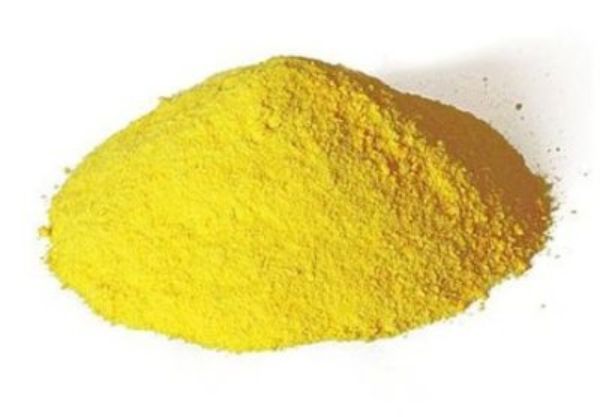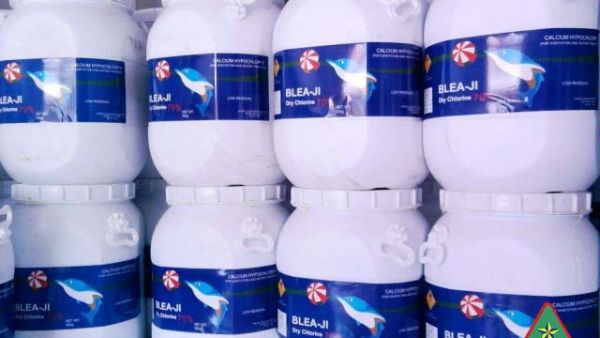CÔNG TY TNHH HÓA CHẤT VÀ
MÔI TRƯỜNG MIỀN NAM
MÔI TRƯỜNG MIỀN NAM
Water pollution is a matter of global concern. Wastewater sources, garbage, etc. are one of the main causes of water pollution. Therefore, the treatment of wastewater before being discharged into the environment is extremely necessary. One of the current measures is the use of industrial wastewater treatment chemicals to treat wastewater. Types of wastewater treatment chemicals have many types and are very diverse, with many different characteristics for different uses and treatment. So let's find out what is wastewater treatment chemicals? And the current types of wastewater treatment chemicals to have the right and appropriate ways to use it!

1. What are wastewater treatment chemicals?
Wastewater treatment chemicals is a common name for chemicals that can remove toxic substances from domestic wastewater and factory wastewater before being discharged into the environment. After using chemicals to treat industrial wastewater, it will create a safe water source to ensure safety for people as well as for the ecosystem.
If wastewater is not treated and discharged directly into the environment, toxic substances present in the wastewater will be dangerous to human health such as external diseases, respiratory diseases, and cancer. ...or ecological environment will be destroyed creating dead rivers, dead land.

2. Types of wastewater treatment chemicals
2.1 Coagulation chemicals
Including types such as iron alum, aluminum alum, PAC, Polytetsu, .. creating large sized flocs and settling to the bottom.
– PAC
+ Has the formula [Al2(OH)nCl6nxH2O]m, yellow powder, easily soluble, low heat, transparent solution, has a strong effect on hygroscopicity.
+ Can treat wastewater containing suspended residues such as industrial wastewater, civil water treatment, industrial water supply, directly settling water in rivers, lakes and canals to create domestic water, aquaculture breeding tanks. PACs can also be used.
+ Dosage: Dissolve into a solution of 5-10% and add to the source to be treated. Soft water treatment dosage is 1 – 10 g/m3 PAC. The dosage of wastewater treatment is 20 – 200 g/m3 PAC.

- Polytetsu
+ Has the formula [Fe2(OH)n(SO4)3n/2]m, has a yellow powder form, usually 1 bag will have 25kg, originating from Japan.
+ Create flocculation, flocculation in water and wastewater treatment, deodorize and reduce BOD, COD in wastewater, remove heavy metals, phosphorus.
+ Dosage: Mix with water at the rate of 10-20%, 3g/m3 depending on conditions and water quality.
2.2 Chemical auxiliaries
Including types: Polymer Cationic and Polymer Anion.
– Polymer Cationic
+ Formula (C3H5ON)n, powder form, white color, odorless, completely soluble in water, corrosive, high viscosity, active in both acids and bases, irritating to eyes and skin, 1 bag contains 25kg , originating in the UK.
+ Used in industrial and domestic wastewater treatment, ... sludge treatment, flocculation to increase coagulation, increase sedimentation, filter water to reduce suspended solids. As a thickener, a settling aid, it absorbs water quickly.
+ Dosage: Mix 0.5kg of Cationic Polymer into 1000 liters of water, stir well and use.
– Polymer Anion
+ Formula CONH2[CH2-CH-]n, white powder, odorless, strongly hygroscopic, expands in water, originated in England.
+ Used as flocculant. The purpose is to settle small solid or colloidal wastes, help speed up the process, reduce SS, COD of water. As an additive and binder of aqua feeds, a preservative, and a drying sludge after treatment.
+ Polymer Anion is dissolved in water to form a stock solution, then pumped into the system to be treated.
2.3 Chemicals to balance pH
– Caustic soda NaOH
+ Available in the form of tablets, granules, flakes, 50% solution, odorless, existing as white solid, 99% concentration. When dissolving NaOH, it is imperative to use cold water because it is easily absorbed by CO2. Origin from China, Taiwan, Indonesia, Thailand.
+ Widely used in light industry, chemical industry and metallurgy, textile dyeing, medicine, pesticides, synthetic organic chemistry. In addition, it is also used to produce chemicals from caustic soda.
+ Depending on the pH, add the appropriate amount of chemicals to balance to a stable level.
- Sulfuric Acid
+ Is a strong acid, viscous liquid, colorless, non-volatile, 2 times heavier than water. Has a concentration of 98%, can be dissolved in water in any ratio. Originated from Vietnam.
+ Mainly used in industries: alum production, iron and steel, water treatment, .. also used to produce fertilizers, pesticides, ..
+ When mixing sulfuric acid, it is necessary to add the acid to the water, not vice versa.
2.4 Disinfectant chemicals
- Chlorine Hi Chlon 70%
+ The formula is Ca(OCl)2, small opaque white granules, strong hygroscopicity, easy to dissolve, chlorine content is 70%. Humidity is 10 - 14%, 1 barrel has 45kg, originating from Japan.
+ Used to clean swimming pools, disinfect and deodorize factory wastewater, drainage systems, bridges and food containers.
+ Active chlorine is calculated by 3 -5 mg/l for wastewater after complete biological treatment.
- Chlorine Nickel 70G Tosoh
+ Contains the highest concentration of chlorine, 70% concentrated, granular, low dust, long-term storage, fast dissolving, no harm to the environment, made in Japan.
+ Used for swimming pool water treatment, water treatment, .. In addition, it is also used for bleaching, disinfection and oxidation extremely effectively.
+ Dosage: On average, about 0.7 mg/l wastewater is used (depending on the type of wastewater).

2.5 Chemicals provide nutrients for microorganisms
The content of nutritional elements depends on the composition of the wastewater and the ratio between them is determined experimentally.
- Phosphoric Acid
The chemical formula is H3PO4.
+ Mainly provides phosphorus for microorganisms in biological treatment tanks.
Dosage: 20kg/day and night.
– Urea
+ Mainly provides nitrogen for microorganisms in biological treatment tanks.
+ Dosage: 80kg/day and night.
The use of chemicals for wastewater treatment is extremely important. It helps to clean, disinfect, and deodorize wastewater. Thus, when wastewater is discharged into the environment, it can ensure the surrounding life and the ecological environment. Each type of industrial wastewater treatment chemical has different characteristics. Depending on different conditions, different types of wastewater treatment chemicals are applied and suitable for the conditions to create the best results and efficiency.
Address: 67/3 đường Bình Phú, Phường Tam Phú, Tp Thủ Đức, Tp. HCM, Việt Nam
Hotline: 0909.507.516
Email: pkd.southernchem@gmail.com
Website: www.hoachatmiennamco.com
Hotline
Hotline